Picnic tables are a quintessential part of any outdoor space, from parks and schools to restaurants and event venues. Choosing the right materials is key to maximizing durability while meeting aesthetic needs. Two of the most popular materials for crafting picnic tables are metal and wood, each offering its own strengths and weaknesses depending on the environment and activities the picnic table will need to endure.
As a leading provider of commercial-grade picnic tables, Picnic Furniture offers top-quality wooden and metal picnic table options purpose-built for longevity across various outdoor venues. With proper insight into the unique benefits of metal versus wood, you can make the optimal choice when investing in picnic tables.
CTA: Discover the importance of commercial picnic tables.
.png)
Understanding the Basics
Picnic tables are a must-have for outdoor dining areas, parks, schools, event venues, and recreational spaces. The two most common materials for picnic tables are metal and wood.
Metal picnic tables are typically made from aluminum, galvanized steel, or powder-coated steel. They resist weathering, require little maintenance, and can withstand heavy use.
Wood picnic tables are usually constructed from wood species like pressure-treated pine, redwood, or cedar. Wood offers a natural, warm aesthetic but requires more regular upkeep. There are advantages and disadvantages to both materials depending on your climate, intended use, and design sensibilities.
Key Differences Between Wood and Metal Picnic Tables
- Durability: Metal outdoor furniture is more resistant to heavy use, rough treatment, and elements like rain, heat, and UV rays. However, higher-quality treated wood can also be quite durable.
- Maintenance: Metal requires little maintenance besides occasional cleaning. Wood needs re-staining or re-sealing every 1-2 years to protect it from weathering.
- Weather resistance: Coated metal outdoor furniture holds up better against moisture, water, sun exposure, and temperature swings with minimal deterioration.
- Aesthetic: Wood offers traditional rustic charm. Metal has a sleek, contemporary look. Both come in a range of color options.
- Weight: Metal tables tend to be lighter than wood, making them easier to move or reposition.
- Customization: Wood can be easier to engrave, carve, or paint for customization. However, metal can be powder-coated in most colors and can be purchased custom with raised or cutout lettering and logos.
- Cost: Upfront, metal tables are typically more expensive than wood. But metal’s durability and lower maintenance costs can equal savings long-term.
The Pros and Cons of Wooden Picnic Tables
Pros of Wooden Picnic Tables
- Natural beauty: The rich grains and textures of wood lend an inviting, outdoorsy feel that metal cannot replicate. Wood harmonizes beautifully in natural settings.
- Warmer to the touch: Wood does not get hot or cold to the touch like metal can. The wood feels comfortable against the skin no matter what the outdoor temperature.
- Customizable: It’s easy to sand, stain, carve, and paint wood to personalize a table to your specifications.
- Eco-friendly: Sourced from renewable resources, untreated wood is biodegradable and compostable after its usable life.
Cons of Wooden Picnic Tables
- Maintenance: Requires yearly staining/sealing to protect from weather conditions, drying, cracking, or insect damage.
- Durability: More prone to splintering, warping, rotting, mold, and degradation than metal. Softwoods are less durable than hardwoods.
- Weathering: Moisture and sun cause faster wear and tear on wood. Discoloration, splitting, and cupping can occur over time.
- Weight: Heavier than metal tables and harder to reposition frequently.
The Pros and Cons of Metal Picnic Tables
Pros of Metal Picnic Tables
- Durability: Withstands heavy daily use with minimal wear and tear over many years. Resists dings, scratches, stains, and UV damage.
- Weather-resistance: Handles exposure to rain, snow, sun, and temperature fluctuations. You can avoid rust with galvanized or stainless steel.
- Low-maintenance: Just occasional wiping down is needed. No staining, sealing, or extensive upkeep is required.
- Custom finishes: Powder coating allows you to pick any color for your table, or you can choose the classic metallic look.
- Lightweight: Easier to move and rearrange than heavy wood tables, especially if the table is aluminum. Great for venues that require frequent outdoor furniture rearrangements.
Cons of Metal Picnic Tables
- Heat conduction: Metal surfaces get hot in the sun and cold in winter, which can be uncomfortable against bare skin.
- Acoustic properties: Metal can get noisy when moved around and tends to amplify loud noises.
- Cost: Often pricier upfront than wood, though the long lifespan balances out costs.
- Customization: Carving or painting metal for personalized designs is not as easy as it is with wood.
.jpg)
Considerations When Choosing Between Wood and Metal Picnic Tables
Climate and Outdoor Conditions
The climate a picnic table is exposed to influences material choice. In hot, arid regions, metal holds up better against sun and heat without cracking or drying out. In rainy, humid areas, metal resists rot and warping from moisture. Wood can still thrive in many climates with proper maintenance but may deteriorate faster in extreme conditions.
Intended Uses
Consider the activities and user groups the table will accommodate. For children, wood avoids potential burns from hot metal. For rambunctious kids, durable metal withstands rough play better. For dining, wood offers a warmer aesthetic. For frequent events, lightweight metal can easily be moved.
Metal works well for parks, playgrounds, campsites, and other high-traffic venues. The natural beauty and customizability of wood are great for restaurants, hospitality settings, and style-focused venues.
Durability and Lifespan Considerations
Metal is the clear winner for extending a picnic table's lifespan and reducing the need for replacement. Powder-coated steel can last over 20 years with minimal wear and tear. Even high-end woods only last 10-15 years before showing signs of deterioration.
Maintenance Requirements
One of metal's biggest advantages is minimal maintenance. Only the occasional wiping down and cleaning is required. Wood needs thorough cleaning a few times a year and re-staining or sealing every 1-2 years. Paler woods may gray and crack faster. Monitoring for splintering, warping, and insect damage is also advised for wood.
Style and Aesthetic Preferences
Wood offers timeless, nostalgic charm and craftsmanship. Metal provides a sleek, contemporary, customizable look through colored powder coating. Consider which material best suits your design vision and decor.
Possible Safety Concerns
For kids’ spaces, softwoods avoid potential burns from hot metal. But metal is less prone to splintering. Ensure wood surfaces are sanded smooth and check for sharp or protruding hardware on metal tables. Anchor tables properly into the ground to prevent tipping accidents.
Other Picnic Table Materials to Consider
While metal and wood are the most popular, picnic tables also come in other materials that each offer unique advantages.
Concrete
Known for durability, concrete picnic tables withstand years of intensive use with minimal upkeep. The solid, heavy material deters vandalism and does not blow over in windy conditions. However, concrete can develop cracks over time and may not provide the most comfortable seating experience. For truly long-lasting performance, opt for reinforced and precast concrete options like the durable concrete picnic tables from Picnic Furniture.
Recycled Plastic
Made from post-consumer recycled plastic, these picnic tables offer weather resistance and an eco-friendly profile. The plastic holds up well to the sun, rain, and humidity with no rotting, splintering, or insects. Recycled plastic tables are also easy to clean and available in a wide range of color options. Just be aware they can develop stains over time, which may be hard to remove.
Fiberglass
With colors embedded throughout, fiberglass picnic tables won’t chip or need repainting. Fiberglass withstands harsh weather conditions with minimal maintenance required. Just be careful to avoid strong cleaning solvents that could damage the finish.
CTA: To learn more about your options for picnic tables, check out our comprehensive picnic table guide.
.png)
Final Thoughts and Recommendations
When to Choose a Wooden Picnic Table
Wood is ideal when you want:
- A classic, rustic aesthetic with natural grain beauty
- Ability to easily customize with engravings or paint
- A comfortable feel against the skin in hot or cold weather
- To match an existing wood-heavy decor scheme
When to Choose a Metal Picnic Table
Metal is recommended for:
- Withstanding very intensive, daily public use
- Low-maintenance outdoor settings like parks and campsites
- Contemporary design schemes favoring sleek metal furniture
- Versatile venues need lightweight tables to rearrange seating
CTA: Shop now for quality metal picnic tables.
Discover the Best Metal or Wood Picnic Tables for Your Needs
Whichever material you choose, ensure you select high-quality, commercial-grade picnic tables built to handle the elements and years of use. As an industry leader for over 20 years, Picnic Furniture offers expertly constructed wood and metal picnic tables purpose-built for parks, restaurants, schools, event venues, and commercial properties nationwide.
Our wide selection allows you to hand-pick the perfect picnic tables to match your space's unique aesthetic, durability needs, and functionality requirements with help from our knowledgeable staff. Explore picnic table options for sale and invest in supremely crafted, built-to-last outdoor furniture guaranteed to serve your outdoor setting for decades to come.
CTA: Contact us if you have any questions or would like to request a quote.
Frequently Asked Questions
Which is better, wood or metal picnic tables?
It depends on your needs. Metal is more durable and weather-resistant, but wood provides a warmer, more natural aesthetic. Wood also requires more maintenance. For low-maintenance public spaces, metal is better. For style-focused venues, wood is preferable.
Do metal or wood picnic tables last longer?
Powder and plastic-coated metal picnic tables last longer than wood, thanks to their resistance to pests, moisture, fading, and corrosion. Powder-coated steel can last well over 20 years with minimal wear. Even durable wood types only last about 10-20 years before replacements are needed.
How do you take care of wood picnic tables?
Use a water-resistant stain or sealant every 1-2 years and routinely clean the table with mild soap and water. Check for splintering, cracks, rot, or insect damage. Make repairs right away. Cover the table or store indoors to limit sun and moisture exposure.
Should I get wood or metal picnic tables for my business?
For restaurants and hospitality businesses, wooden tables would complement the ambiance. For parks, schools, and public spaces needing durability, metal is ideal. Consider the climate, activities, guests, and your design preferences when deciding between wood or metal.

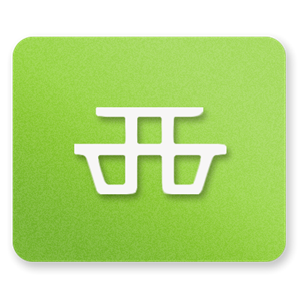













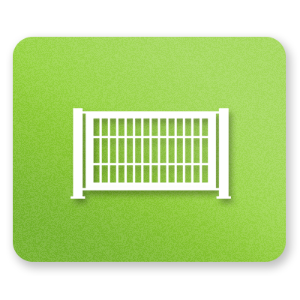


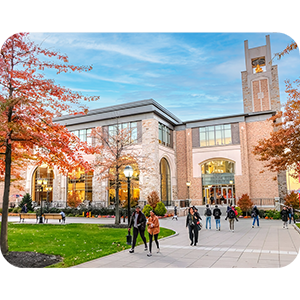

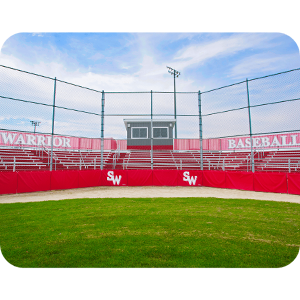
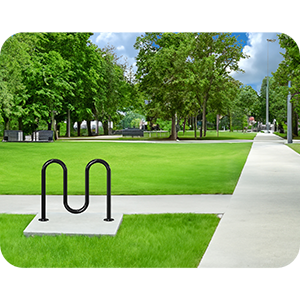
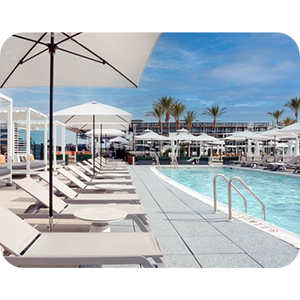
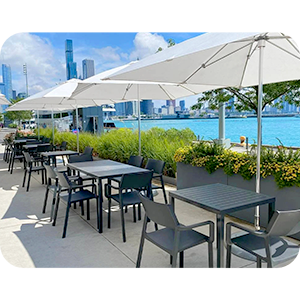
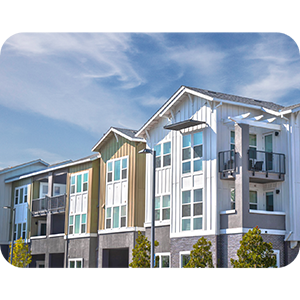
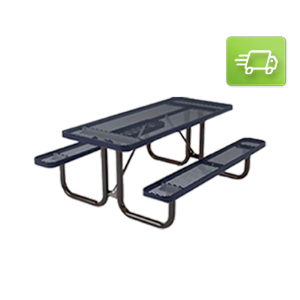
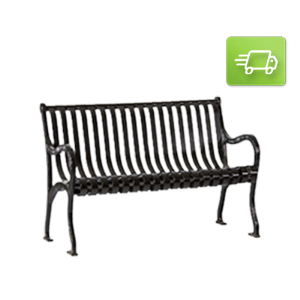
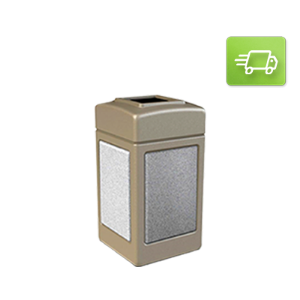
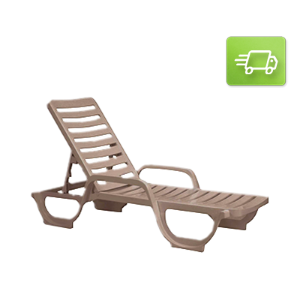
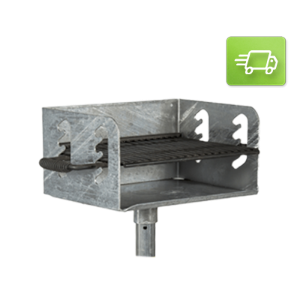
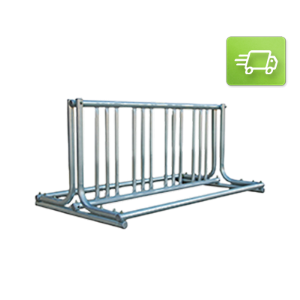
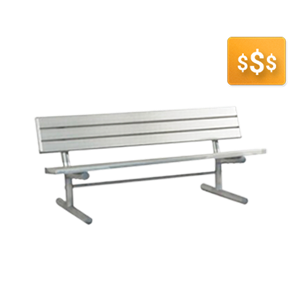
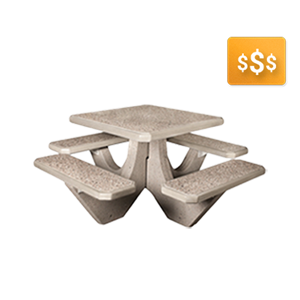
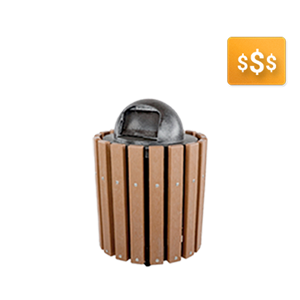
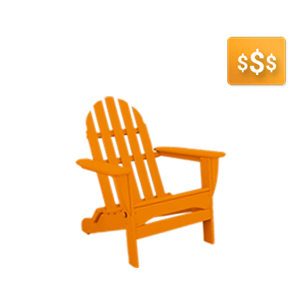
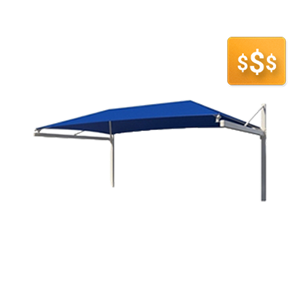
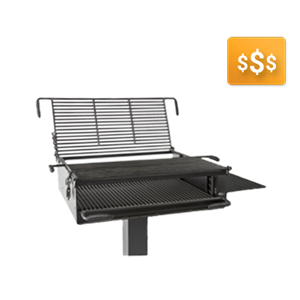


.png)






Leave your comment